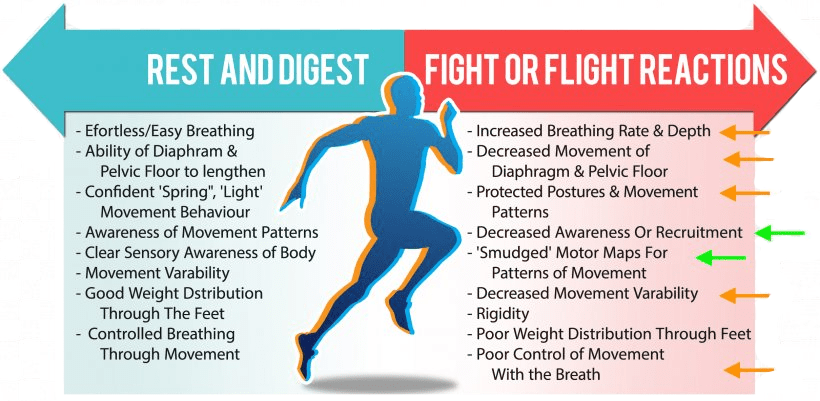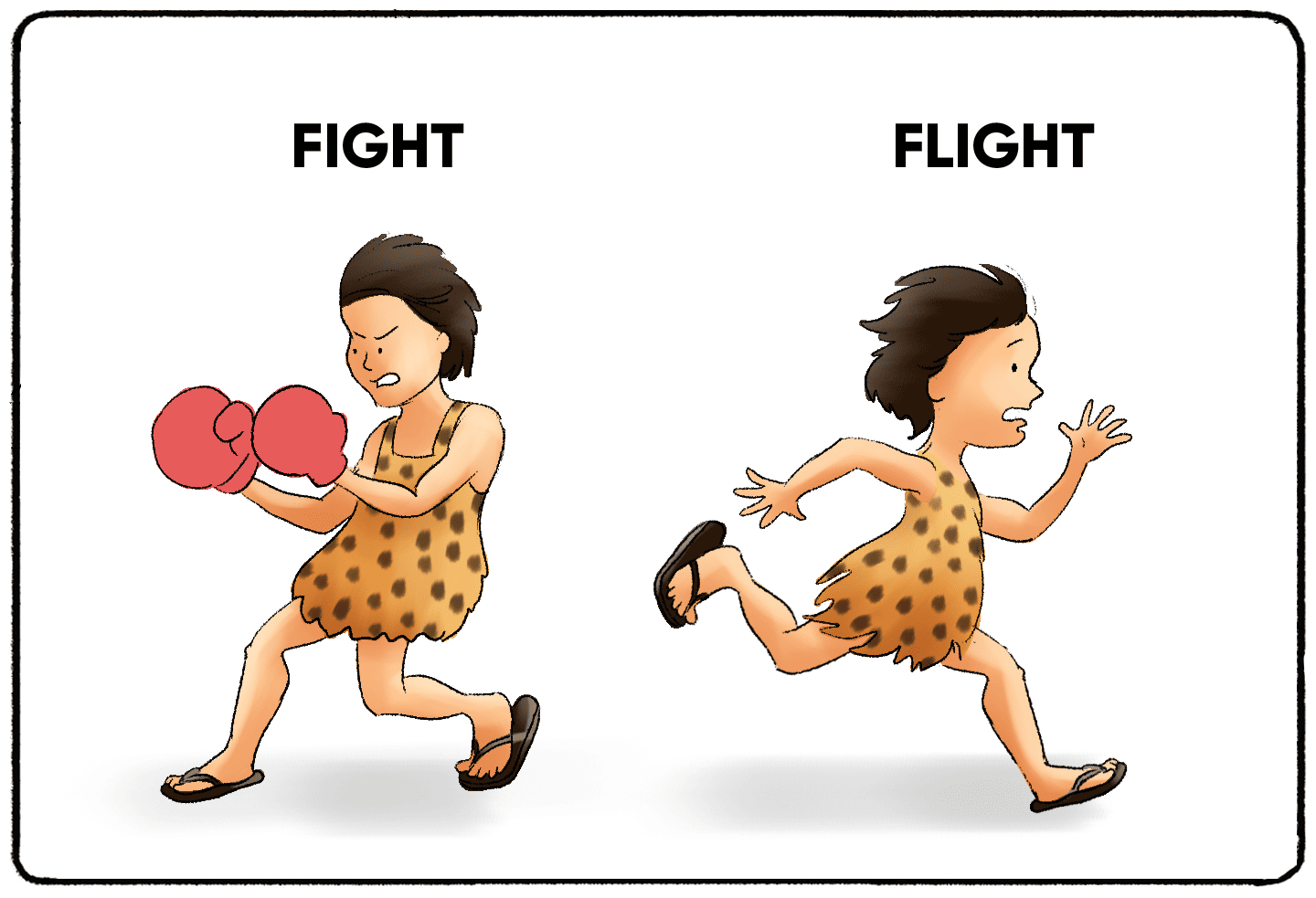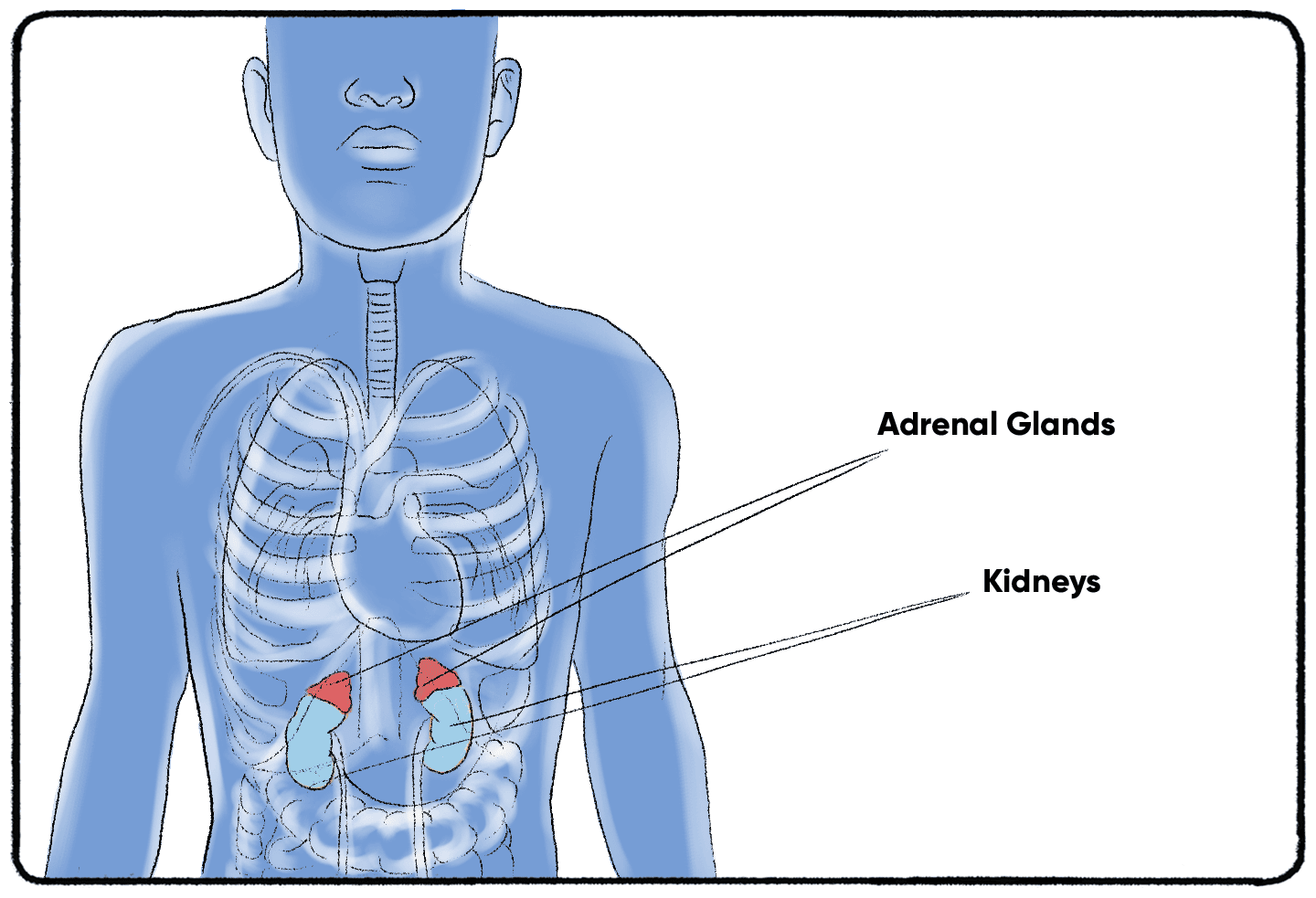Fight or flight is a term that almost everyone knows, but not everyone really knows what causes it, or why it happens. In this article, we are going to cover the basics of what psychologists and physiologists know about the matter!
What is Fight or Flight?
Fight or Flight, is a term that refers to your body’s response to a stressor. Evolutionary Psychologists believe the purpose of this response is to help humans survive. During times of stress, humans had to quickly analyze a dangerous situation and decide which action to take: fight or flight.
The fight or flight response is a reaction that tells your body that you are in trouble, it is a sort of survival instinct. A hormone called Adrenaline is quickly dumped into your body which can allow you to exert an extraordinary amount of energy and power in a short amount of time.
Who Developed Fight or Flight Theory?
This term was first coined in 1920 by Walter Cannon. Cannon was a physiologist who realized that there was a chain-reaction that occurred when humans felt in danger.
What are the Signs of Fight or Flight in the Body?
The Fight or Flight response activates very quickly (a few seconds) in a situation that evokes fear. Common physical responses to an adrenaline rush are:
- Sweaty or clammy hands
- Increased heart rate
- Pale skin that is flushed
- Shaking or trembling
- Dilated pupils
- Increased blood pressure
- Increased body temperature
Most of these are linked to your autonomic nervous system, which controls part of your body you can’t consciously change.

Can Fight or Flight Cause Diarrhea or Other Excretory Functions?
In addition to these physical things that you feel, the fight or flight response also stops digestion and a few other important bodily functions in its tracks. If you've ever heard someone say “they were so scared they almost peed themselves”, they may have been lying.
Fight or Flight and Anxiety
One main symptom of the flight or fight syndrome is hyper awareness. This mean you may become more aware of movement happening in your peripheral vision and more aware of quiet noises. In fact, many who go through this “adrenaline dump” process feel as if time is passing very slowly. Psychologists say this is because the human brain is firing at a much faster pace than normal to allow intake of all the “variables” of the situation to allow for a better overall decision.
During a stressful situation, there is a lot going on in the brain. The adrenal gland releases adrenaline, which is responsible for most of the physical symptoms that you feel when fight or flight kicks in. The flooding of hormones by the sympathetic nervous system to the body also sends extra blood to the muscles that will assist if the response is to run or fight.
Do all of these physical responses cause an emotional response, or vice versa? Various theories of emotion have tried to answer this question and how fight or flight directly relates to anxiety.

How to Reset Fight or Flight Response
After the threat has been removed or resolved, it can take up to an hour for the body to reach homeostasis again. Many people feel tired for the rest of the day as their muscles may have been exerted. Others report feeling jittery or anxious even after the danger has left.
If the fight or flight response is activated too often (or in other words, if you find yourself in stressful situations often) it can contribute to a health condition called Hyperglycemia; Which can lead to type 2 diabetes or hypertension. Humans aren’t meant to be under extreme stress for long periods of time.
What Causes a Fight or Flight Response?
The Fight or Flight adrenal response is caused by any stressful situation to cause the body to think it’s in immediate danger. Even though early forms of civilization utilized the fight or flight response quite often, that isn’t always the case with our modern lives. If you are planning a big presentation at work or a speech for your college class, acute stress can still trigger the response.

What Triggers Fight or Flight in Everyday Life?
This evolutionary advantage was very helpful in helping early humans live, but now that we are quite safe in an everyday environment, it is quite rare. Common examples that might cause fight or flight are:
- A car accident
- Noticing a spider near you
- Loud, unexpected noises
- Going on a first date
- Riding a roller coaster
- Getting cut off in traffic
Your life does not always have to be in imminent danger for the response to kick in, your body just has to feel like it is.
Does Fight or Flight Make You Stronger?
There are many cases where people have reported being able to lift more than humanly possible when someone else’s life is in danger. This happened in the case that inspired the “Hulk”, where a woman was seen lifting a car up to save her child that was trapped inside.
Though there isn’t too much supportive evidence to why this happens, we can attribute it to the increased adrenaline. Adrenaline seems to allow humans to exert more strength than normally possible, which usually results in muscle tissue damage. There seems to be a give and take. The give is super-strength, while the take is extra time to heal. The basis of the fight or flight response, the biological proponent, is a warning to the body of danger in a life threatening situation, but as it evolved it became psychological as well.
How to Combat The Stress
Fighting the fight or flight response comes down to managing stress, there are many ways to do that, for instance:
- High Intensity Exercise
- Learn to let things that are out of your control not stress you out
- Practice mindfulness meditation
- Go out with your friends
- Spend time with family
- Learn how to use your Relaxation Response
Triggering your brain to relax in stressful situations is simple, but not always easy. One of the most helpful immediate solutions is to learn to control your breathing. This is best done by practicing. That doesn’t mean to throw yourself into a stressful situation, it means to practice it when you’re calm and then use it when you find yourself in that stressful situation.
You will train your brain to associate those breathing exercises with being calm and in turn when you find yourself in a stressful situation, those same exercises can seem easier to remember. Think of it like your brain performing an exercise.
Fight, Flight, Freeze, Fawn
Freeze and Fawn is a new development that has come up alongside Fight or Flight. While observing humans in stressful situations, psychologists realized there were a few other decisions they could make, with freeze and fawn being the second most common.
Opossums display the freeze response very well. When scared, Opossums will play dead, and since they are noted as being “nasty”, many predators will leave them alone. In many movies, you will see an actor staring at something off screen, unable to move. This is them displaying the freeze response, where the body is unable to make any movements.
Researchers believe this came from the idea that a predator can’t see you if you don’t move. Fight Flight Freeze was accepted by many until a 4th option came along.
Fawn is another adrenal response. Fawn is a synonym for a push over. This is someone who goes along with something that is stressful to them because they are too afraid to stand up for themselves. Another term would be a “Yes Man”, because they have trouble saying no.
Fight or Flight and Freeze or Fawn are just four very broad categories for how people deal with the stress in their life differently. Have you figured out which one you are after reading this? If you can identify one of these in your life, you may be prone to dealing negatively to stressful situations, and I recommend finding a healthier alternative or a safer environment.



